Big Mal Lives!
By:
January 4, 2012
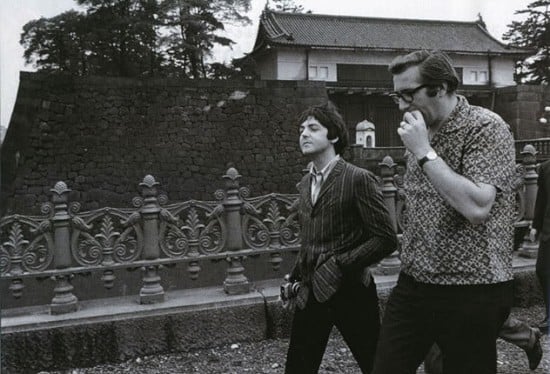
Thirty-five years ago today, on the night of January 4, 1976, four Los Angeles policemen responded to a call from a rented motel apartment at 8122 West 4th Street.
The caller was Fran Hughes, who shared the apartment with boyfriend Malcolm “Big Mal” Evans, former road manager and bodyguard of the Beatles. Earlier that evening, Hughes had called John Hoernie, who was collaborating with Evans on a book titled Living with the Beatles Legend, and asked him to come over. Evans, known as “the sixth Beatle,” was (she claimed) despondent, and doped up on Valium.
When Hoernie got there, Evans picked up an air pistol (according to some accounts; according to other accounts, it was an air rifle, or even a real pistol or rifle), which prompted Hughes’ 911 call. The police arrived, ordered Evans to put the gun down. When he didn’t — which is exceedingly odd, because by all accounts Big Mal was “outsize but gentle” — they shot and killed him.
“Paul is Dead” conspiracy theorists tend to bring up Evans’ death as further evidence of a vast coverup. Evans may have been killed, they speculate, because his memoir (which was never published, though in 2005 some extracts from it were released) was planning to reveal some sort of truth about Faul (Fake Paul).
Those people are paranoid nuts. Without touching the Paul-is-Dead tarbaby, I hereby announce a startling hypothesis, based on my own research: Big Mal is alive and well.
Why was Mal Evans’ death faked? I have a few pet theories, but this is no place for irresponsible speculation. What follows are cold, hard facts.
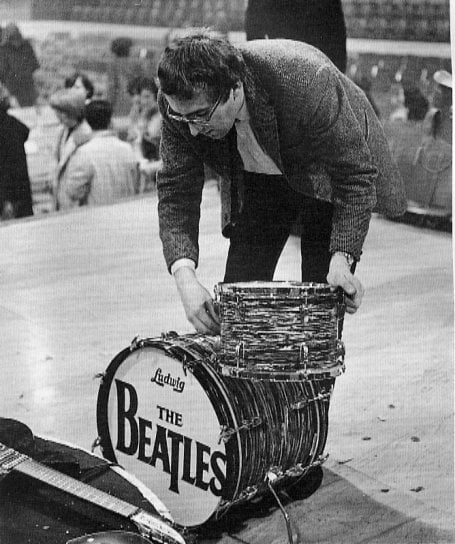
In 1962, Brian Epstein hired former telephone engineer/repairman “Big Mal” Evans (his height was somewhere between six-foot-two and six-foot-six; it depends which account you believe) as the Beatles’ assistant road manager.
The gentle Liverpudlian giant, who’d worked as a bouncer at the Cavern Club, acted as a driver, roadie, bodyguard, doorman, and dogsbody to the band. Evans purchased the Beatles’ underwear and signed fan photos; he carried their gate receipts and went out to eat with them.
But Evans had many other talents, some of which were revealed in those pre-’66 days. For example, he played Hammond organ on “You Won’t See Me.” (He is sometimes referred to as Mal “Organ” Evans.) And in ’64, when Paul McCartney was introduced to cannabis by Bob Dylan in New York, Evans took Macca’s dictation. This, I suspect, is where Evans first discovered his penchant for far-out writing.
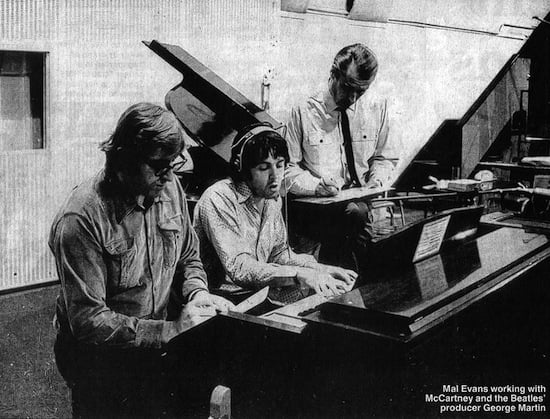
Before the Beatles stopped touring, Evans saw it all. When the windscreen of their van shattered in freezing temperatures in January ’63, and the Beatles lay huddled on top of one another for warmth during the drive from Liverpool to London, Evans was driving. He procured pills and marijuana for the Beatles. When a Beatles fan slashed her wrists in Wellington (New Zealand) in June ’64, it was in Evans’ room.
Like the Beatles themselves, Evans’s worldview was irrevocably altered by the Beatles’ success.
The Beatles’ last concert was at Candlestick Park, San Francisco, on August 29, 1966. What became of Evans then?
As noted, Evans was multitalented. He lent his voice to “Yellow Submarine,” played kazoo on “Being for the Benefit of Mr. Kite!”, controlled an alarm clock on “A Day in the Life” (and he is the one heard counting out the timing on the 24-bar orchestral build up; and he played the cosmic final piano chord), shoveled gravel and contributed backing vocals on “You Know My Name (Look Up the Number),” and hit the anvil heard on “Maxwell’s Silver Hammer.” Evans played tambourine on “Dear Prudence” and “Strawberry Fields,” trumpet on “Helter Skelter,” harmonica and possibly bass harmonium on “Being for the Benefit of Mr. Kite.”
Evans also acted. He made cameo appearances in Help! (1965; he played a Channel swimmer) and Magical Mystery Tour (1967; he played a streetcorner magician). He also appeared in the movie Blindman (1971; he played a bearded rifleman), and can be spotted in the documentaries Let It Be (1970) and The Concert for Bangladesh (1972).
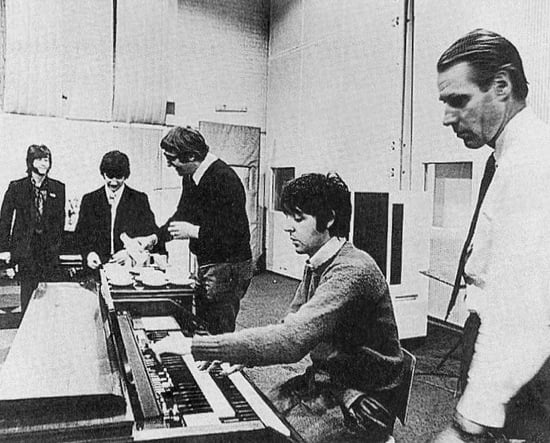
Evans took some of the photos for the “White Album” insert poster. It was Evans who inspected the Maharishi’s ashram, in India, before the Beatles arrived there in 1968. Then he stuck around, cooking eggs for Ringo (who hated Indian food) during their stay. Evans traveled around Europe and Africa with Paul; he went nightclubbing with Ringo in London; he visited the Greek island where the Beatles planned to establish their “Beatle Dome” Argonaut Folly. Evans fixed cups of tea and plates of beans-on-toast during the recording of Magical Mystery Tour; and he sat up with John and Paul the first time they tripped on LSD together.
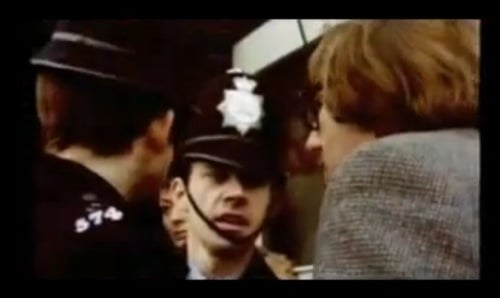
For the filming of the final scene in Let it Be, Evans set up the equipment on the rooftop of Apple’s offices — and during the band’s performance, he kept the police at bay.
Along with the Beatles, Evans evolved rapidly during the 1960s. Perhaps more rapidly than the Beatles. Even before he began to lose weight and grow his hair long (in the 1970s), his appearance began to morph. By 1966, he looked less like a bodyguard than a worldly intellectual who happened to enjoy lugging other men’s suitcases.
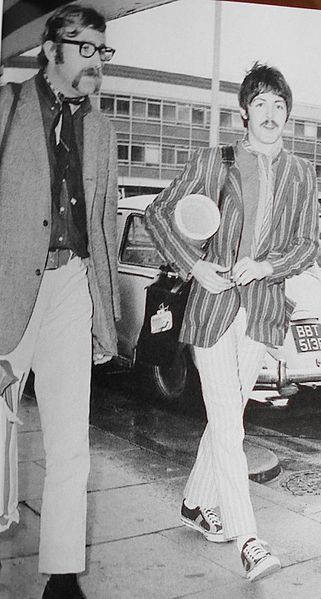
In November 1966, on the flight back to England after a holiday trip with Evans and Jane Asher to Kenya, McCartney conceived an idea in which an entire album would be role-played, with each of The Beatles assuming an alter-ego in the “Lonely Hearts Club Band”, which would then perform a concert in front of an audience. The inspiration is said to have come when Evans asked McCartney what the letters “S” and “P” stood for on the pots on their in-flight meal trays. This is a bizarre anecdote — of course Evans would have known what the letters stood for. Another version of the story has Evans asking McCartney to “pass the pepper,” which became a eureka moment for Macca.
One suspects that the entire album was Evans’ idea, and these anecdotes were McCartney’s back-handed way of admitting that fact. Both Ringo Starr and longtime Beatles friend Pete Shotton — who hung out at Abbey Road and contributed to various songs — have said that it was Evans who not only coined the name of the fictitious ensemble but made the invaluable suggestion that Sgt. Pepper’s Lonely Hearts Club Band be presented as the Beatles’ alter egos. (Shotton and Starr are quoted, for example in Beatlesongs, by William J. Dowlding.) As we’ll see, Evans was something of an alter-ego expert.
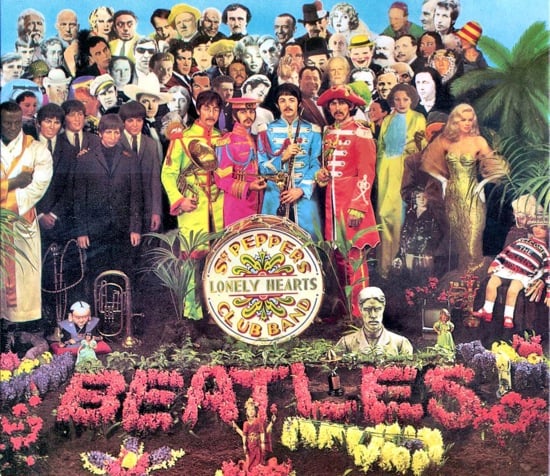
Most interestingly, to me, is the fact that Evans did photo research for the Sgt. Pepper’s album cover. (He also spent hours polishing the instruments held by the Beatles on the cover.) The album cover art, art-directed by Robert Fraser, and designed by English pop artist Peter Blake and Jann Haworth, depicts the band posing in front of a collage of celebrities. These include: Marlene Dietrich, Carl Gustav Jung, W.C. Fields, Diana Dors, James Dean, Bob Dylan, Issy Bonn, Marilyn Monroe, Aldous Huxley, Karlheinz Stockhausen, Sigmund Freud, Aleister Crowley, Edgar Allan Poe, Karl Marx, Oscar Wilde, William S. Burroughs, Marlon Brando, Stan Laurel and Oliver Hardy, and Lenny Bruce.
The album cover is a virtuoso high-lowbrow collage — a semiotician’s dream!
During this period, Evans served a “special role, halfway between bodyguard and nursemaid, mostly for John,” according to Philip Norman’s John Lennon: The Life. He and other Beatles aides were torn between the increasingly acrimonious members of the group — asked to perform tasks for one Beatle without telling the others. For example, McCartney and Evans arranged the entire filming and recording and concept for Magical Mystery Tour before revealing the idea to the others.
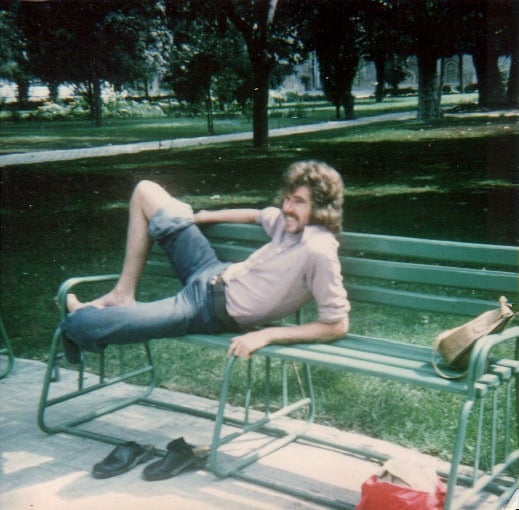
In other words, he wasn’t terribly busy. “We had a meeting to set up Apple,” Evans would recall. “Paul turns round to me and says, ‘What are you doing these days, Mal, while we’re not working?’ ‘Not too much, Paul.'” That says it all.
As a kind of joke, the Beatles made Evans president of Apple. Yet Evans was sacked from Apple because, according to the Beatles’ new manager, Allen Klein, he wasn’t earning his keep.
Still, the even-keeled Evans stayed on good terms with everyone. He was a member of the groom’s party at McCartney’s 1969 wedding, and worked as a kind of housekeeper for McCartney; and he was the only member of the Beatles’ entourage to welcome Yoko Ono into the mix. Which explains why the gentle giant is credited on the 1970 John Lennon/Plastic Ono Band album as having provided “tea and sympathy.”
Mal Evans separated from his wife in ’73, and followed John Lennon to Los Angeles. Note that in 1973, the American Yippie Abbie Hoffman was busted for cocaine, and soon after changed his identity and went underground. Going underground was key to the radical chic mythos, then.
In Los Angeles, Evans hung out in the studio when a drunken Lennon and Phil Spector recorded Rock’n’Roll. When Cynthia Lennon brought Julian to visit his father, Evans tagged along on a trip to Disneyland and made small talk about Liverpool — to ease the tension. He was at the studio with John in ’74 when Paul McCartney dropped by for one last jam.
What else? One hears that Evans spent much of this period working on a never-completed memoir, Living with the Beatles Legend (sometimes rendered as Living the Beatles’ Legend). Having once transitioned from telephone engineer to factotum, Evans was now transitioning into a new role: author.
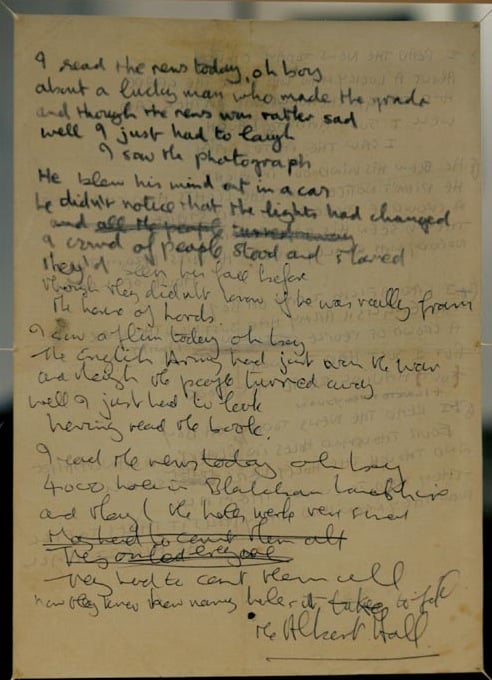
Evans was deeply interested in the Beatles’ lyrics, one learns. At Beatlefest conventions in the early 1970s, he was forever revealing the true meaning of, for example, “Let It Be” — which he claimed was not inspired by a vision of McCartney’s mother. And he ended up in possession of the original handwritten lyrics to dozens of Beatles songs, which his family was later sued for attempting to auction off, after his death. Evans also contributed some lyrics to McCartney’s opaque song “Fixing A Hole,” for the Sgt. Pepper album; Paul gave him a cash payment instead of a songwriting credit. According to Peter Doggett’s You Never Give Me Your Money: The Beatles After the Breakup, Evans wrote other lyrics for Sgt. Pepper, too — and spent the last few years of his life attempting to get credit for them from McCartney.
Between August 1966 and his emigration to the US in 1973, Evans lost quite a bit of weight — which one suspects may have been a symptom of habitual usage of controlled substances. Look at photos of John Lennon (example below) from the same period — he’s emaciated.
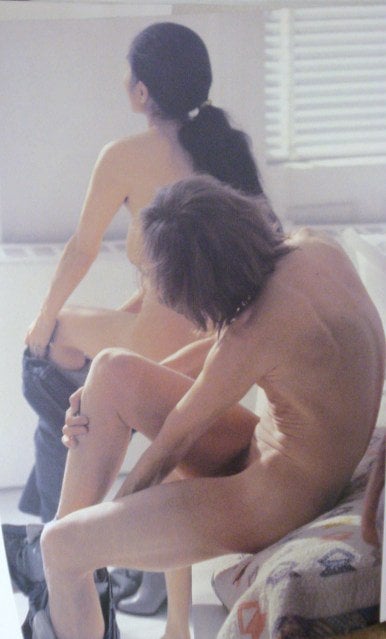
Evans also grew his hair fashionably long (as did the Beatles, during that same period). Around the time that Lennon adopted hipster glasses, Evans stopped wearing his own fuddy-duddy glasses. Tousled locks were in, and — like George Harrison — Evans stopped combing his naturally wavy hair straight. The humid air of southern California made it frizzy. He grew a moustache and shaved it off. He was letting his freak flag fly.
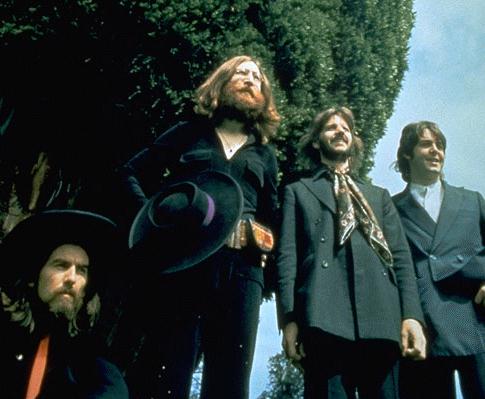
In photos from the late 1960s and early ’70s Evans is still recognizable — tall, handsome in a beaky way — but the transformation is striking. He looks younger, more naive and hopeful. It’s as though he were changing his identity. Moving to Los Angeles was undoubtedly motivated by that desire — as it was for Lennon.
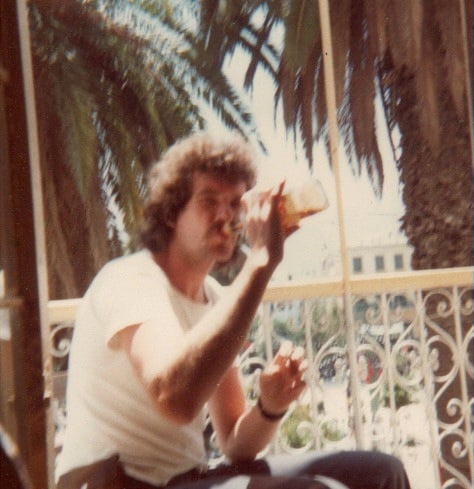
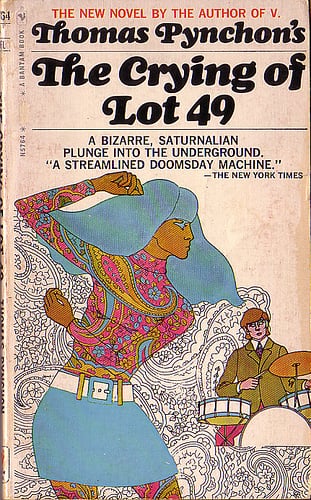
In 1966, the year that the Beatles stopped touring and Mal Evans began to drift rudderless through the late Sixties, Thomas Pynchon’s prescient novella The Crying of Lot 49 was published. Near the beginning of the book, looking over a grotesque new Southern Californian city, the novella’s protagonist, Oedipa, has a semiotician’s vision:
She looked down a slope, needing to squint for the sunlight, onto a vast sprawl of houses which had grown up all together, like a well-tended crop, from the dull brown earth; and she thought of the time she’d opened a transistor radio to replace a battery and seen her first printed circuit. The ordered swirl of houses and streets, from this high angle, sprang at her now with the same unexpected, astonishing clarity as the circuit card had. Though she knew even less about radios than about Southern Californians, there were to both outward patterns a hieroglyphic sense of concealed meaning, of an intent to communicate. There’d seemed no limit to what the printed circuit could have told her (if she had tried to find out); so in her first minute of San Narciso, a revelation also trembled just past the threshold of her understanding.
The reference to a transistor radio’s circuits reminds us of Mal Evans’s deep affinity with communications technology. Evans was, as we’ll see, something of a Shakespeare scholar, as well — which reminds us of Pynchon’s description of Oedipa, “a rare creature indeed, unfit perhaps for marches and sit-ins, but just a whiz at pursuing strange words in Jacobean texts.” Pynchon tells the story of an outsider: wandering alone between the forces of structure and chaos, between the status quo and the colorful mob. She is an interpreter in search of hieroglyphics to decode.
PS: In 1966, Antonioni’s Blow-Up also appeared — a movie whose English hipster protagonist struggles with a profound sense of irreality and identity loss.
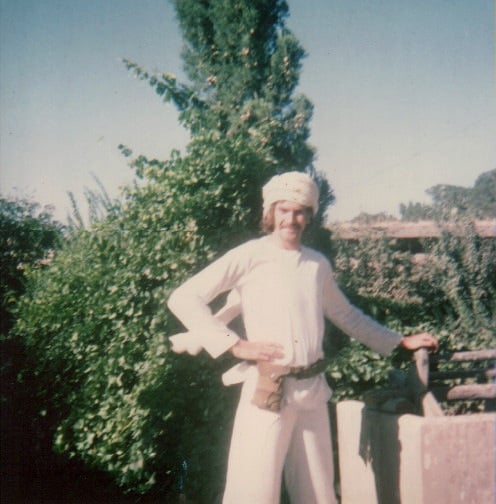
Lennon and McCartney always insisted that none of their Sgt. Pepper lyrics referred to recreational drug use. Which leads one to speculate that it was Evans (one of whose jobs was procuring drugs for the Beatles) who sneaked drug references into the lyrics. Perhaps McCartney and Lennon were too naive to recognize the double meaning of the phrase “I’d love to turn you on” (“A Day in the Life”); or “Found my way upstairs and had a smoke/And somebody spoke and I went into a dream” (same song); or “Doing the garden, digging the weeds/Who could ask for more?” (“When I’m Sixty-Four”).
How was Evans in a position to sneak lyrics into songs? The Beatles’ post-1966 songwriting sessions were shambolic affairs: The Beatles sat around the studio shouting out lyrics, which Evans recorded in a notebook.
Published excerpts from Evans’ diaries are sketchy at best — supposedly most of his diaries and notes for his Beatles memoir were confiscated by the police, after his death, and lost — and rather impossible to believe. Example:
September 13, 1968. Heard today that police arrived at EMI to bust us after we had left. On further enquiries this did not appear to have happened — wouldn’t matter anyway, what would they find?
This diary entry seems manufactured — possibly by Evans himself, for use in some imagined future drug trial as spurious evidence of innocence. Which gives some indication that Evans, author of a 1960s text (his diary) which blurs reality and fiction, includes historical falsehoods, and in which the author is a character, was a postmodernist author avant la lettre. Note that one of Evans’ jobs for the Beatles was faking their signatures on thousands of autographed photos, en route to New York for their famous American tour. How postmodernist.
Evans was also, as mentioned earlier, a former telephone engineer. Technology and postmodern literature — a potent admixture, indeed! Very Pynchon-esque. One wishes that instead of killing himself (death-by-cop is a form of suicide), Evans had gone back to school and studied English Literature. Or perhaps he already had done that. Perhaps, immediately after the Beatles’ last concert (as mentioned, it was on August 29, 1966), Evans enrolled at a university somewhere in Great Britain. If so, he most likely would have done so in Wales.
Why Wales?
It is my understanding that Evans is a Liverpudlian; however, for some reason, perhaps for the same reason that Paul McCartney began passing himself off as a Scotsman around the same time, Evans went Welsh. He was changing his identity.
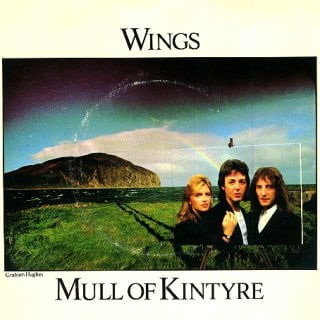
Wales was important to the Beatles. Note that in 1967, in Bangor, North Wales, at a meditation seminar held by their Indian guru Maharishi Mahesh Yogi, the Beatles chose publicly to renounce drugs, claiming they no longer needed them. And it was here that they heard of the death of their manager Brian Epstein from (supposedly) an overdose of sleeping tablets.
Mal Evans, who at that point was (as I’ve demonstrated) reinventing himself in all sorts of ways, may have taken more from the Maharishi’s teachings — regarding reincarnation and multiple lives, surely, but also regarding the importance of challenging received assumptions about individuality, aspiration, and consumption — than the Beatles did. One wonders whether, as he stood on the London train platform with the Beatles, waiting to travel to Wales and the Maharishi, Mal Evans saw a vision of himself as he used to be: younger, thinner, more innocent and hopeful.
Perhaps both Mal Evanses boarded the train, one riding with his fellow proletarians in a coach compartment, the other in a private, luxurious Beatles car. Was it at that precise moment that Mal Evans decided to eventually stage his own death and be reborn? If so, perhaps the Evans who got off that train wasn’t the same one who boarded it.
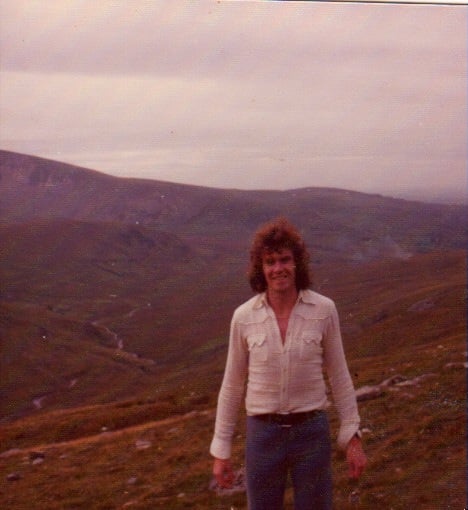
PS: The October 21, 1966 Aberfan mining tragedy in South Wales made a deep psychic impact on another band: the Bee Gees, whose “New York Mining Disaster 1941” is based on this event. The song, the Bee Gees later admitted, was a Beatles ripoff. Reading the lyrics today, I wonder if it’s really a song about Mal Evans and his determination to “die” and go underground?
I keep straining my ears to hear a sound.
Maybe someone is digging underground,
or have they given up and all gone home to bed,
thinking those who once existed must be dead?
As we’ll see, Mal Evans spent years — over a decade! — underground, straining his ears to hear the sound of someone digging for him, before finally deciding it was safe to re-emerge.
Just how Welsh did Evans go after 1966? So Welsh that in 1968 Evans single-handedly discovered Badfinger.
After seeing the Welsh rock band The Iveys play at the Marquee Cub in London, Evans pushed their demo tapes to the four Beatles until he gained approval to sign them. His support led to the band — later renamed Badfinger — becoming the first non-Beatle recording artists on the Apple label. Evans even produced a couple of Badfinger songs.
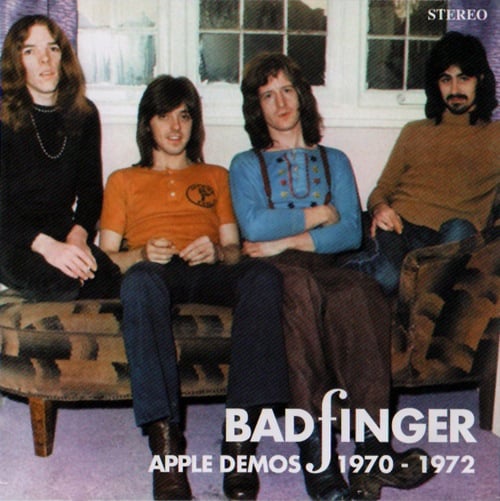
I have even more evidence of Evans’ efforts to reinvent himself as a Welshman. According to my original research, one of the things that Evans started doing during the mysterious 1966-1974 period was competing in Wales at outdoor bowls. A Malcolm Evans finished fourth at the sport’s inaugural championships in 1966; and he has even been described as the “first Welshman to win the world outdoor bowls title in 1972.”
In 1974, Badfinger frontman Pete Ham quit the band and moved back to Wales; the following year, he killed himself. Big Mal supposedly died-by-cop shortly after that. Another avenue to explore: Was Mal Evans related to Badfinger’s one non-Welsh member, Liverpudlian guitarist/co-frontman Tom Evans? Does Tom Evans’ mysterious 1983 suicide also bear investigation? Are Pete Ham and Tom Evans still alive, too? Is John Lennon? Does all of this have something to do with the anti-Beatles, anti-gnostic conspiracy?
But that’s crazy talk. This is a serious and sober investigation, concerned only with facts.
So did Mal Evans study English Literature in Wales, during the lost years of 1966-1974? Until this point, my hypothesis has been sheer speculation. But this is where things get very interesting.
According to my research, a “Malcolm Evans” began studying English Literature and Drama at the University of Wales in 1966; this same Evans received a Ph.D. from that university in 1972. It’s not impossible that there is another Mal Evans out there, I suppose, but the timing is extraordinary.
Note that “Malcolm Evans” is well over six feet tall, identifies as Welsh, and is — as recent photos at the end of this post will demonstrate — “kindly but menacing-looking.” Which is exactly how Mal Evans is described in The Love You Make: An Insider’s Story of the Beatles.
Wouldn’t Evans have assumed a different identity, if he planned to go underground? Perhaps Evans learned a thing or two from Edgar Allan Poe, whose story “The Purloined Letter” suggests that the best way to hide is in plain sight. (Note that Poe was one of the figures he had a hand in adding to the Sgt. Pepper’s cover.) The postmodern Pop artist Andy Warhol, meanwhile, had made a name for himself mass-producing surfaces devoid of content or meaning. Might it be that Evans wanted to try the postmodern aesthetics of a true signature made in flesh and bone, a substantial presence so authentic that people wouldn’t recognize it?
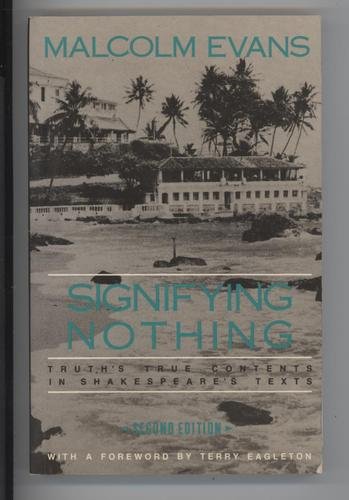
Malcolm Evans’ one and only book so far, Signifying Nothing: Truth’s True Contents in Shakespeare’s Text, is an erudite, postmodernist text which suggests that in the hands of the dominant order Shakespeare is a tool of oppression. In his Introduction, famed literary critic Terry Eagleton writes that Evans’ book “breaks boldly with our staid notions of critical composition and threatens to elude the conventional categories of literary studies.” Very Beatles-esque, indeed.
Here’s something very peculiar about Signifying Nothing: It is prefaced by the diary of an Edward Harrison, who in the 1920s traveled to the Caribbean to teach Shakespeare. In a sly footnote, Evans writes: “The authenticity of the Harrison journal is in considerable doubt. I would ascribe to it here no more authority or truth than if it were, in fact, only a work of literary fiction.” In fact, there is no Edward Harrison; he’s an alter ego for Evans. Who seems to have known quite a lot about alter egos!
And who undoubtedly borrowed the name “Harrison” from one of the Beatles. Who were fascinated with Shakespeare.
Remember Mal Evans’s dispute with Paul McCartney about the Sgt. Pepper lyrics he’d helped write? Malcolm Evans gets in a dig at Macca on page 86 — where he sneers at BBC Radio’s middlebrow program Desert Island Discs, “where establishment castaways as distinguished as Princess Margaret or Paul MacCartney [the misspelling obviously a dig at Paul’s attempt to go Scottish] were shipwrecked with only a handful of gramophone records…”
Here’s another funny thing about Signifying Nothing: It wasn’t published until 1986. (Amazon’s 1989 date refers to the 2nd edition; the book was selected by the American Library Association as one of the outstanding critical books of 1986.) Why would an aspiring academic wait fifteen years until after he’d earned his Ph.D. before publishing his first book? Something doesn’t add up. It’s as though Malcolm Evans was laying low.
A paranoid nut might suggest that Mal Evans had loose ends to tie up before he could risk reemerging under his purloined-letter-style nom de plume, Malcolm Evans. (See the Badfinger-Lennon murder/suicide chronology.) But this isn’t a paranoid’s fantasy; it’s data-based analysis.
NB: The Last Word, which Malcolm Evans announced in ’89 as a forthcoming book on “speech, writing, and informatics,” has never appeared.
The voices at the end of “I Am the Walrus” came from a BBC broadcast of King Lear, which John Lennon heard when he turned on the radio while they were working on the song. He decided to mix bits of the broadcast into the song. The section of Lear used came from Act Four, Scene 6, with Oswald saying: “Slave, thou hast slain me. Villain, take my purse,” which comes in at the 3:52 mark. After Oswald dies, we hear this dialogue:
Edgar: “I know thee well: a serviceable villain, As duteous to the vices of thy mistress As badness would desire.”
Gloucester: “What, is he dead?”
Edgar: “Sit you down, father. Rest you.”
A paranoid nut might find a way to connect this scrap of Shakespeare to Mal/Malcolm Evans. But I am strictly interested in the observable facts of the matter.
So… did Mal Evans die in 1976?
Corpus Delicti is one of the most important concepts in a murder investigation. When a person disappears and cannot be contacted, many police agencies initiate a missing person case. If, during the course of the investigation, detectives believe that he has been murdered, then a “body” of evidentiary items including physical, demonstrative, and testimonial evidence, must be obtained to establish that the missing individual has indeed been murdered before a suspect can be charged with homicide. The best and easiest evidence establishment in these cases is the physical body of the deceased.
But just read this passage from Philip Norman’s John Lennon: The Life:
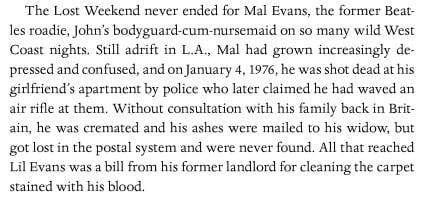
Though Norman doesn’t question whether Evans actually died that night, the details he provides — hasty cremation, missing ashes — would make even the least skeptical person alive wonder exactly what transpired.
Note that John Lennon, who at that point was the Beatle closest with Mal Evans, apparently made a crack about Evans’s ashes being accidentally sent to the “Dead Letter Office.” (This joke is repeated in several books about the Beatles.) Would a grieving friend say such a thing? This makes one suspect that Lennon knew that Mal Evans wasn’t dead. Which might make one wonder what, if anything, Evans had to do with the assassination of the Man Who Knew Too Much four years later.
But that’s crazy talk. This is a serious and sober investigation, concerned only with facts.
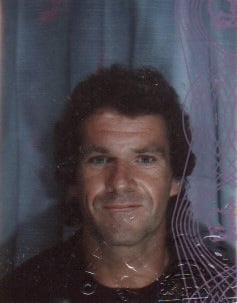
Fact: The passport photo above was taken in the 1980s. The passport belongs to the “Malcolm Evans” introduced earlier. The hair is shorter, the moustache absent. But the image of Malcolm Evans bears a strong, even striking resemblance to the 1970s photos of Mal Evans, doesn’t it?
If Mal Evans did not die in 1976 — if, in fact, he went underground instead — then where did he go? What has he done since 1976? Let’s begin by asking what the Malcolm Evans character introduced above did after earning his Phd in 1972?
If Malcolm Evans had not led a double life as Mal Evans until 1976, surely it would be easy to determine his whereabouts from, say, 1972-1989. Yet I have so far been unable to do so. If I were Mal Evans, and wanted to hide out during the late 1970s through the 1980s, I’d probably have traveled the world. And perhaps, at some point, I would have used my PhD to get a job teaching English Lit., in my adopted home state of California. There is nowhere better than a university campus to maintain an obscure profile.
Below, a rare image of Malcolm Evans from the 1980s — ask yourself whether he looks like an older version of the Mal Evans we’ve seen in the 1960s and ’70s. It’s tricky because he’s not wearing glasses… and he’s artfully obscured his face in this snapshot… but I think he does.
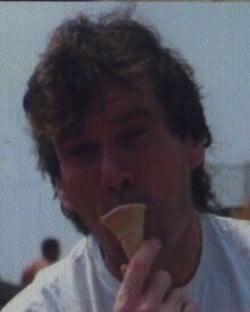
And after the 1980s? What then? Mal Evans was an intellectually restless man, as I’ve established. If it’s true that, according to my theory, he had already gone back to school once, when he was at loose ends — might he not have done so again after 1976? Perhaps even a decade or more after 1976? Recalling Evans’ pre-Beatles knowledge of technology and engineering, I did a little digging into the records of a few of those technology-oriented UK universities founded in the 1960s.
Aha! From 1989-1991, Evans — the very same Malcolm Evans who’d received a Ph.D. from the University of Wales in 1972 — earned an MSc degree from the University of Sussex. His degree was in Technology Policy and Cognitive Science. Is it plausible that there is another Mal Evans out there interested in both literature and technology? No, it is not.
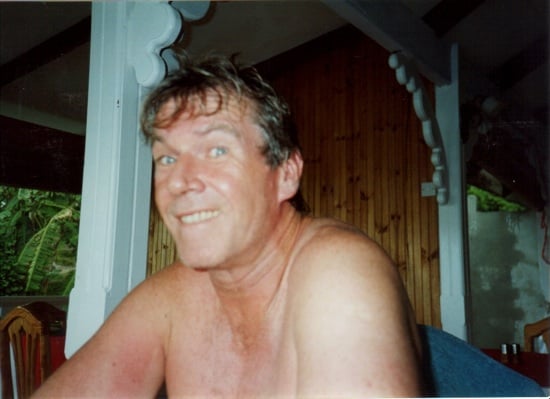
Malcolm Evans seems to have abandoned his career as a professor of English in the 1990s. More evidence, perhaps, that he was only in that line of work until such a time as he deemed it safe to emerge from deep cover and work in higher-profile fields.
Evans consulted from 1990-1994 with Semiotic Solutions, a firm (founded by Virginia Valentine) that had pioneered the application of semiotics to brand analysis. While working for Valentine, Evans adapted the notion of Residual-Dominant-Emergent from the influential Welsh cultural critic Raymond Williams and turned it into a “tool” (read: technology) that many commercial semioticians have been using ever since. Like Clifford Geertz, this budding commercial semiotician may have learned from the Beatles the secret of successfully launching a meme.
Since the late 1990s, Evans has taken higher- and higher-profile roles. From 1998-2001, he was Director of Semiotic Insight at the brand development and marketing insight consultancy Added Value; and a group associate at Fusion 5. Also during these years, Evans wrote, researched and taught semiotics courses at universities around the world.
In 1999, George Harrison was the victim of an assassination attempt. Did Mal/Malcolm Evans organize the assassination in order to silence (or at least frighten) Harrison, because he was about to take another step forward into the limelight, and didn’t want his cover blown? Some crazy conspiracy theorists might think so. But this investigation is concerned only with facts.
Fact: In 2000, Malcolm Evans cofounded the marketing semiotics consultancy Space Doctors, in Brighton (UK).
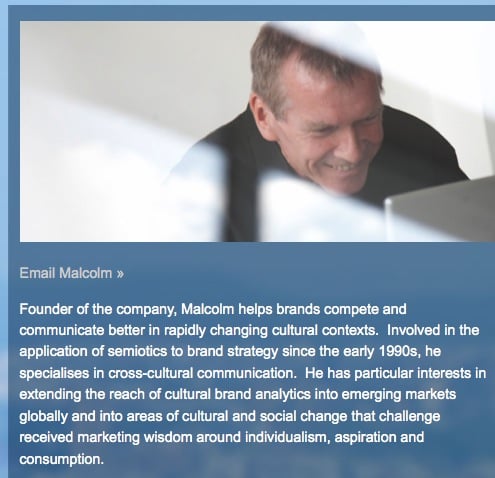
And since 2000?
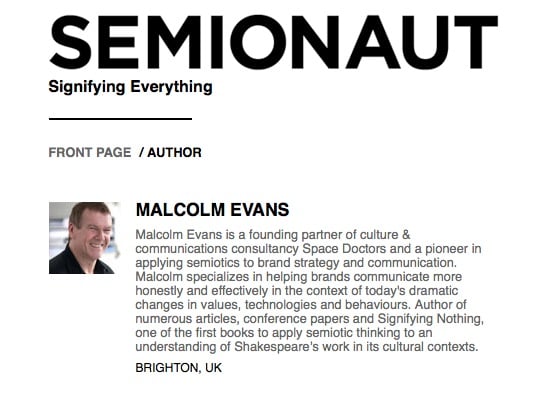
In 2010, Evans cofounded the international cultural and brand semiotics website Semionaut. Evans’ 1960s-flavored posts appear at the site not infrequently. (Examples here and here.) In November of 2011, he wrote a post containing the following passage:
I woke thinking about: the huge cultural influence of India on the Beatles, especially George; Olivia Harrison’s words on what makes a marriage last (mainly not getting divorced but more, worth hearing), inspiring anyone with bodywork dented by life’s ups and downs; how George, recovering from cancer, survived an assassination attempt more savage than the one on John Lennon. The casual honesty and integrity of the Beatles in their early days. Viewing media constructs of themselves detachedly as almost autonomous, with puppet lives of their own. Their ability to be themselves and say what they thought (Lennon’s spontaneous comment about the Beatles being more popular than Jesus). And in UK today a certain timidity, conservatism, young people constrained again to fit a mainstream ideological mould.
No need to read between the lines. (Except to note the absence of any kind words about Macca.) Evans clearly wants to be unmasked.
Welcome back, Big Mal.
MORE FURSHLUGGINER THEORIES BY JOSH GLENN: TAKING THE MICKEY (series) | KLAATU YOU (series intro) | We Are Iron Man! | And We Lived Beneath the Waves | Is It A Chamber Pot? | I’d Like to Force the World to Sing | The Argonaut Folly | The Perfect Flâneur | The Twentieth Day of January | The Dark Side of Scrabble | The YHWH Virus | Boston (Stalker) Rock | The Sweetest Hangover | The Vibe of Dr. Strange | CONVOY YOUR ENTHUSIASM (series intro) | Tyger! Tyger! | Star Wars Semiotics | The Original Stooge | Fake Authenticity | Camp, Kitsch & Cheese | Stallone vs. Eros | The UNCLE Hypothesis | Icon Game | Meet the Semionauts | The Abductive Method | Semionauts at Work | Origin of the Pogo | The Black Iron Prison | Blue Krishma! | Big Mal Lives! | Schmoozitsu | You Down with VCP? | Calvin Peeing Meme | Daniel Clowes: Against Groovy | The Zine Revolution (series) | Best Adventure Novels (series) | Debating in a Vacuum (notes on the Kirk-Spock-McCoy triad) | Pluperfect PDA (series) | Double Exposure (series) | Fitting Shoes (series) | Cthulhuwatch (series) | Shocking Blocking (series) | Quatschwatch (series)
READ MORE essays by Joshua Glenn, originally published in: THE BAFFLER | BOSTON GLOBE IDEAS | BRAINIAC | CABINET | FEED | HERMENAUT | HILOBROW | HILOBROW: GENERATIONS | HILOBROW: RADIUM AGE SCIENCE FICTION | HILOBROW: SHOCKING BLOCKING | THE IDLER | IO9 | N+1 | NEW YORK TIMES BOOK REVIEW | SEMIONAUT | SLATE
